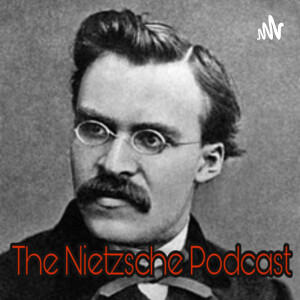
Peter Turchin has continued the work of Ibn Khaldun, by elaborating upon Khaldun's hypotheses and testing them against the wealth of historical data that we now possess. By means of a structural demographic analysis of historical empires, Turchin has worked for years to generate mathematical models in order to explain the trends that seem to recur in every complex society. Now, with the data of 10,000 years of human activity on the group level, it may be possible to finally move beyond the preliminary, pseudo-scientific steps of the discipline of history, and proceed into a truly mathematized phase. This is the discipline that Turchin calls "Cliodynamics", after the Muse of history of Ancient Greece. His intention to leave behind the anthropological and archaeological studies that characterized history in the past, and bring mathematics into the field so that we can begin to make predictions. The reason why many have been so resistant to this development is our belief in free will, and the unpredictability of human action. Turchin thinks that this is a mistake, because while individual decisions are often unpredictable at the individual, granular level, at the level of entire populations or demographics, human beings become rather predictable. Quite in line with the cyclical view of history postulated by Plato, Thucydides, or Nietzsche, Turchin brings the math to demonstrate the truth of their ideas: that, in the realm of human history, all returns eternally.
For our sources today, we're primarily using Turchin's books: War and Peace and War, Ultrasociety, and a brief dip at the end into the overall idea of Ages of Discord, as well as some references to Secular Cycles by Turchin and Nefedov. We'll also include a number of quotes from Roman historians Livy, Plutarch and others, as we examine the period of the Roman Republic, the chaos of the Late Republic and the transition to the Principate, as explained by Turchin's structural-demographic theory. This should be fun, given that we've already considered these events somewhat through the eyes of Machiavelli. Now, we can approach the subject with more rigor. In my view, Turchin is following in the traditions of these thinkers, but developing their work further.
Episode art is Thomas Cole's now famous "Destruction" piece of his cycle, "The Course of Empire".
view more
More Episodes
82: Blaise Pascal’s Faithful Calculations
 2024-01-23
2024-01-23
 2024-01-23
2024-01-23
81: Michel de Montaigne - “What Do I Know?”
 2024-01-16
2024-01-16
 2024-01-16
2024-01-16
80: Gilles Deleuze, pt. 2: Becoming-Active
 2024-01-02
2024-01-02
 2024-01-02
2024-01-02
The Dionysmas Special
 2023-12-23
2023-12-23
 2023-12-23
2023-12-23
78: Hegel’s Master-Slave Dialectic
 2023-12-05
2023-12-05
 2023-12-05
2023-12-05
76: Nietzsche’s Apology
 2023-11-21
2023-11-21
 2023-11-21
2023-11-21
75: Socrates’ Apology
 2023-11-14
2023-11-14
 2023-11-14
2023-11-14
73: The Power to Forget
 2023-10-24
2023-10-24
 2023-10-24
2023-10-24
Wandering Above A Sea of Fog #2
 2023-10-10
2023-10-10
 2023-10-10
2023-10-10
012345678910111213141516171819
Create your
podcast in
minutes
- Full-featured podcast site
- Unlimited storage and bandwidth
- Comprehensive podcast stats
- Distribute to Apple Podcasts, Spotify, and more
- Make money with your podcast
It is Free
- Privacy Policy
- Cookie Policy
- Terms of Use
- Consent Preferences
- Copyright © 2015-2024 Podbean.com






